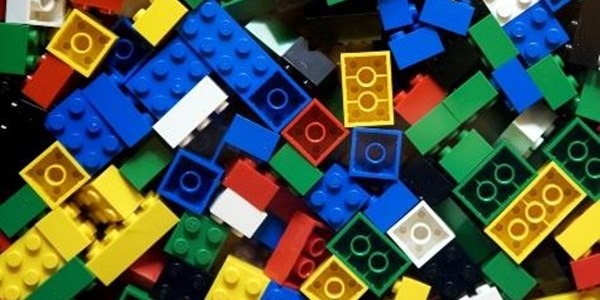Human Interest
Has the imagination disappeared from Lego?─── 11:42 Wed, 26 Nov 2014

London - The Brick 2014 show for Lego enthusiasts is about to take place in London, but critics say the toy has become less creative, with too many specialised pieces and instruction manuals. Is this true?
Lego was simple once, the critics complain. Using just a few blocks, usually square or rectangular, you could make anything. Lack of imagination was the only restraint on creativity.
But these days around 3,000 different pieces exist across the company's range. These include a wizard's hat, a vampire's cape, a croissant, even a pterodactyl's wing. Instruction leaflets added to sets take users through a step-by-step building process.
Nobel Prize-winning chemist Sir Harry Kroto argues that British-designed Meccano, which involves putting nuts and bolts together, is of greater educational value because it mimics real-life engineering. "There is no comparison," he says. "Children should start with Lego, which is basically a toy, and its basic units are bricks. We do not build cars and other machines out of bricks." He adds that children should "graduate" to Meccano.
Millions of Lego-lovers disagree with Kroto's analysis. But occasionally single items of Lego cause resentment - such as a windscreen/roof block made for the cab of a pick-up truck released in 2003. The orange piece, which appeared in just one set, was just one example of Lego becoming over-simplified, while the truck was "an abomination", Big Sal's Brick Blog says.
Traditionalists favour conventional blocks, like the standard "2x4" rectangle, issued with almost 2,000 sets, according to the Bricklink cataloguing site. The Brick 2014 show, taking place at east London's ExCel centre from Thursday until Sunday, demonstrates the extreme creations possible using simple pieces. A model of St Pancras Station and a giant mosaic built by exhibition visitors are among them.
Lego spokesman Roar Rude Trangbaek says it "isn't true" that the toy has become less creative. "Children still get bricks and they can combine them," he adds. "The bricks will probably end up in big boxes in homes and that acts like a pool of creativity."
The brick count on the larger sets has risen in recent years. Top of Bricklink's list is the model of the Taj Mahal, released in 2008, with 5,922 parts. This took over from a limited-edition Star Wars/M&Ms mosaic, sold in 2005, which had 5,462. The Star Wars Millennium Falcon of 2007 required the assembly of 5,174 pieces.
The idea of Lego selling kits with a specific purpose is not new. Since 1964 Lego has sold model sets with instruction booklets, while continuing to offer boxes and tubs of basic bricks.
The blogger Chris Swan argues that instructions marked the start of a decline. "Lego taught me the art of creative destruction - the need to break something in order to make something better," he writes. "Single-outcome sets encourage preservation rather than destruction, and sadly that makes them less useful, less educational (and, in my opinion, less fun)."
Lego's business model, offering both mixed bricks and sets with specific instructions, persisted for decades, with new lines added gradually. The company developed age-specific sets such as Duplo for toddlers and Technic for older users. Commercial spin-offs involving Star Wars and the Harry Potter films did well. These still relied on the basic idea of assembling bricks.
BBC News
But these days around 3,000 different pieces exist across the company's range. These include a wizard's hat, a vampire's cape, a croissant, even a pterodactyl's wing. Instruction leaflets added to sets take users through a step-by-step building process.
Nobel Prize-winning chemist Sir Harry Kroto argues that British-designed Meccano, which involves putting nuts and bolts together, is of greater educational value because it mimics real-life engineering. "There is no comparison," he says. "Children should start with Lego, which is basically a toy, and its basic units are bricks. We do not build cars and other machines out of bricks." He adds that children should "graduate" to Meccano.
Millions of Lego-lovers disagree with Kroto's analysis. But occasionally single items of Lego cause resentment - such as a windscreen/roof block made for the cab of a pick-up truck released in 2003. The orange piece, which appeared in just one set, was just one example of Lego becoming over-simplified, while the truck was "an abomination", Big Sal's Brick Blog says.
Traditionalists favour conventional blocks, like the standard "2x4" rectangle, issued with almost 2,000 sets, according to the Bricklink cataloguing site. The Brick 2014 show, taking place at east London's ExCel centre from Thursday until Sunday, demonstrates the extreme creations possible using simple pieces. A model of St Pancras Station and a giant mosaic built by exhibition visitors are among them.
Lego spokesman Roar Rude Trangbaek says it "isn't true" that the toy has become less creative. "Children still get bricks and they can combine them," he adds. "The bricks will probably end up in big boxes in homes and that acts like a pool of creativity."
The brick count on the larger sets has risen in recent years. Top of Bricklink's list is the model of the Taj Mahal, released in 2008, with 5,922 parts. This took over from a limited-edition Star Wars/M&Ms mosaic, sold in 2005, which had 5,462. The Star Wars Millennium Falcon of 2007 required the assembly of 5,174 pieces.
The idea of Lego selling kits with a specific purpose is not new. Since 1964 Lego has sold model sets with instruction booklets, while continuing to offer boxes and tubs of basic bricks.
The blogger Chris Swan argues that instructions marked the start of a decline. "Lego taught me the art of creative destruction - the need to break something in order to make something better," he writes. "Single-outcome sets encourage preservation rather than destruction, and sadly that makes them less useful, less educational (and, in my opinion, less fun)."
Lego's business model, offering both mixed bricks and sets with specific instructions, persisted for decades, with new lines added gradually. The company developed age-specific sets such as Duplo for toddlers and Technic for older users. Commercial spin-offs involving Star Wars and the Harry Potter films did well. These still relied on the basic idea of assembling bricks.
BBC News














